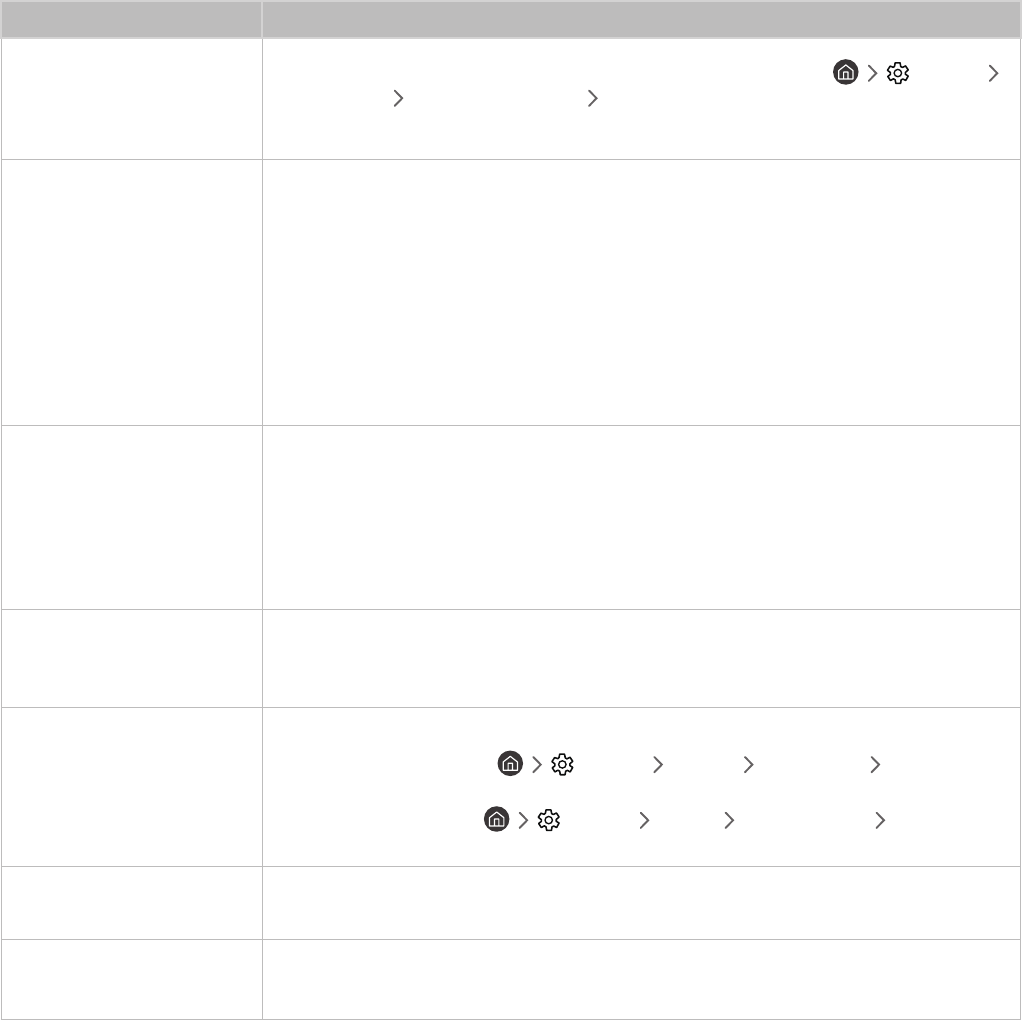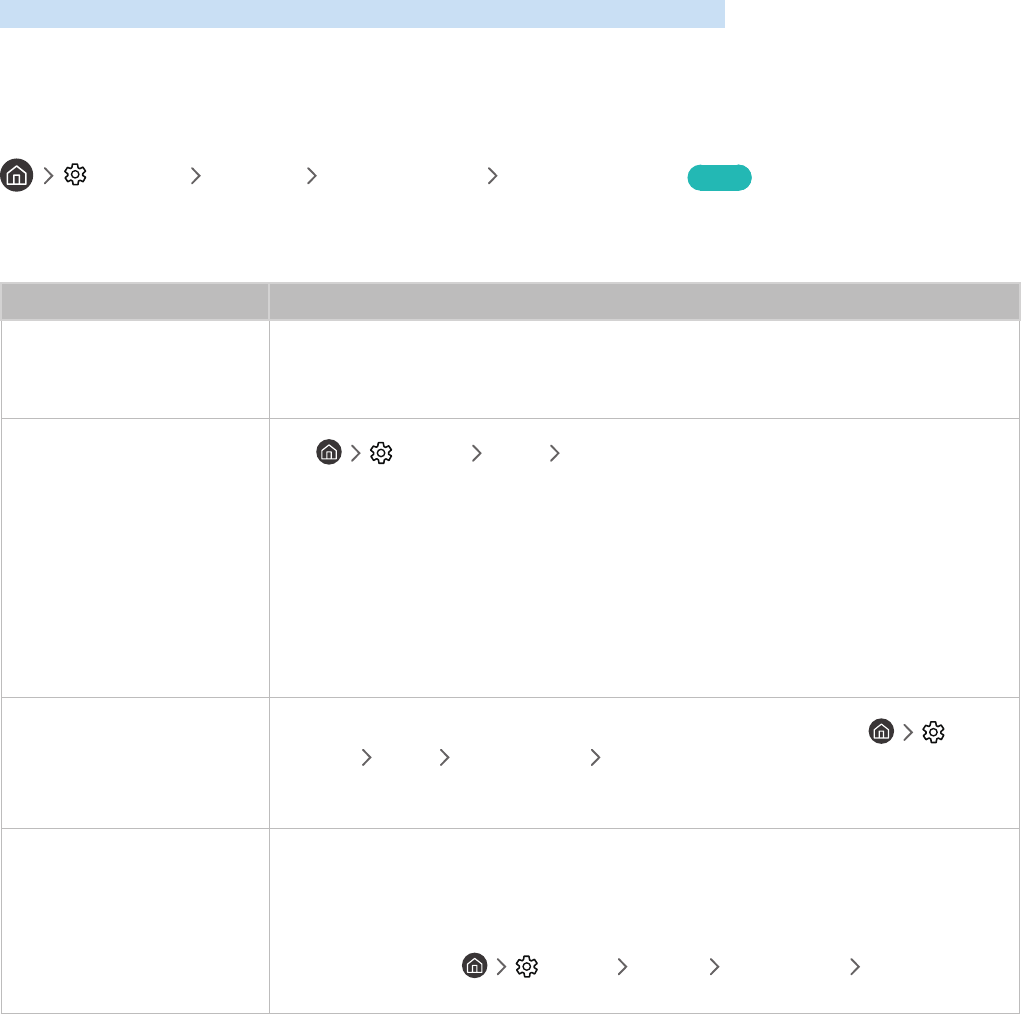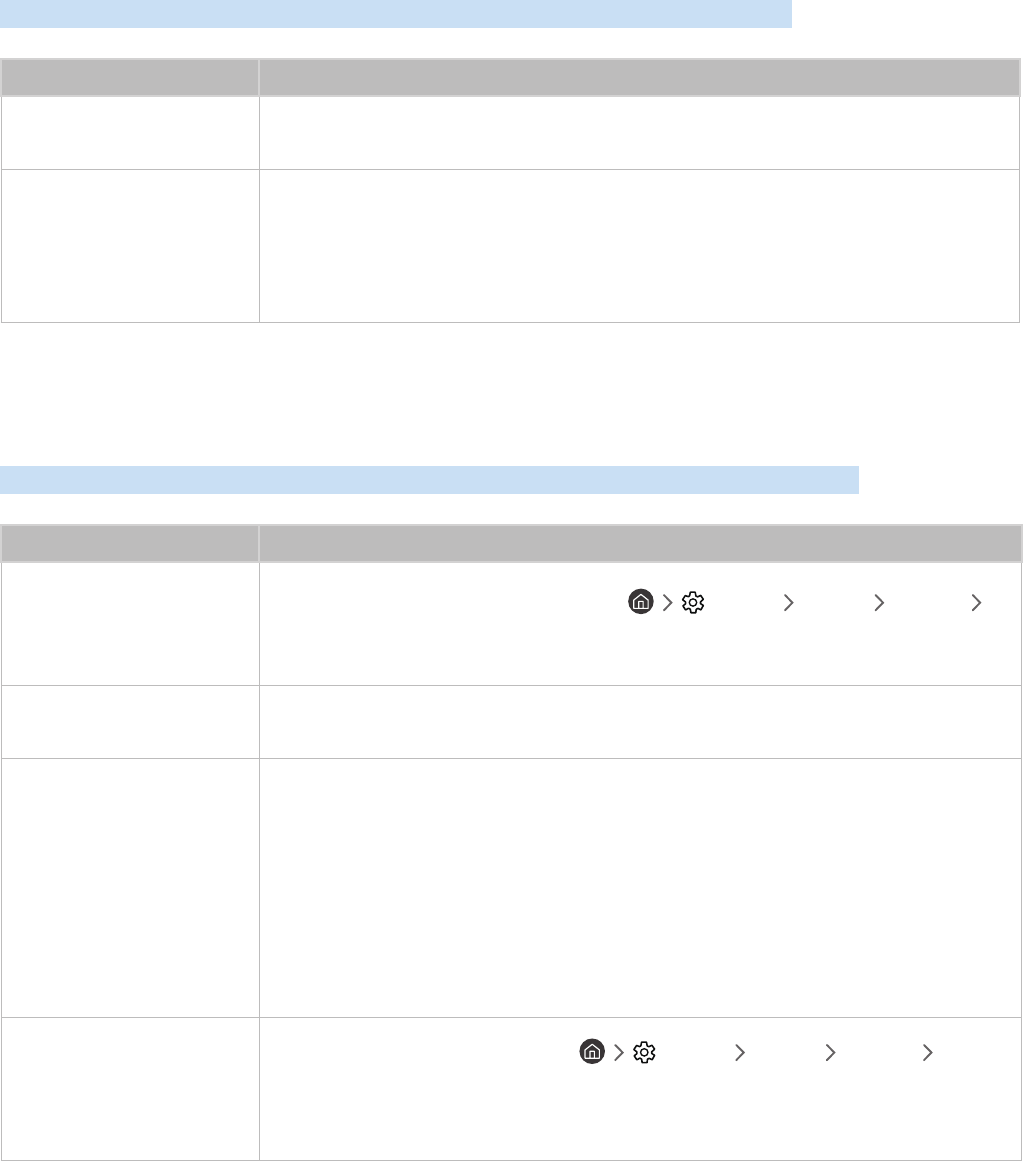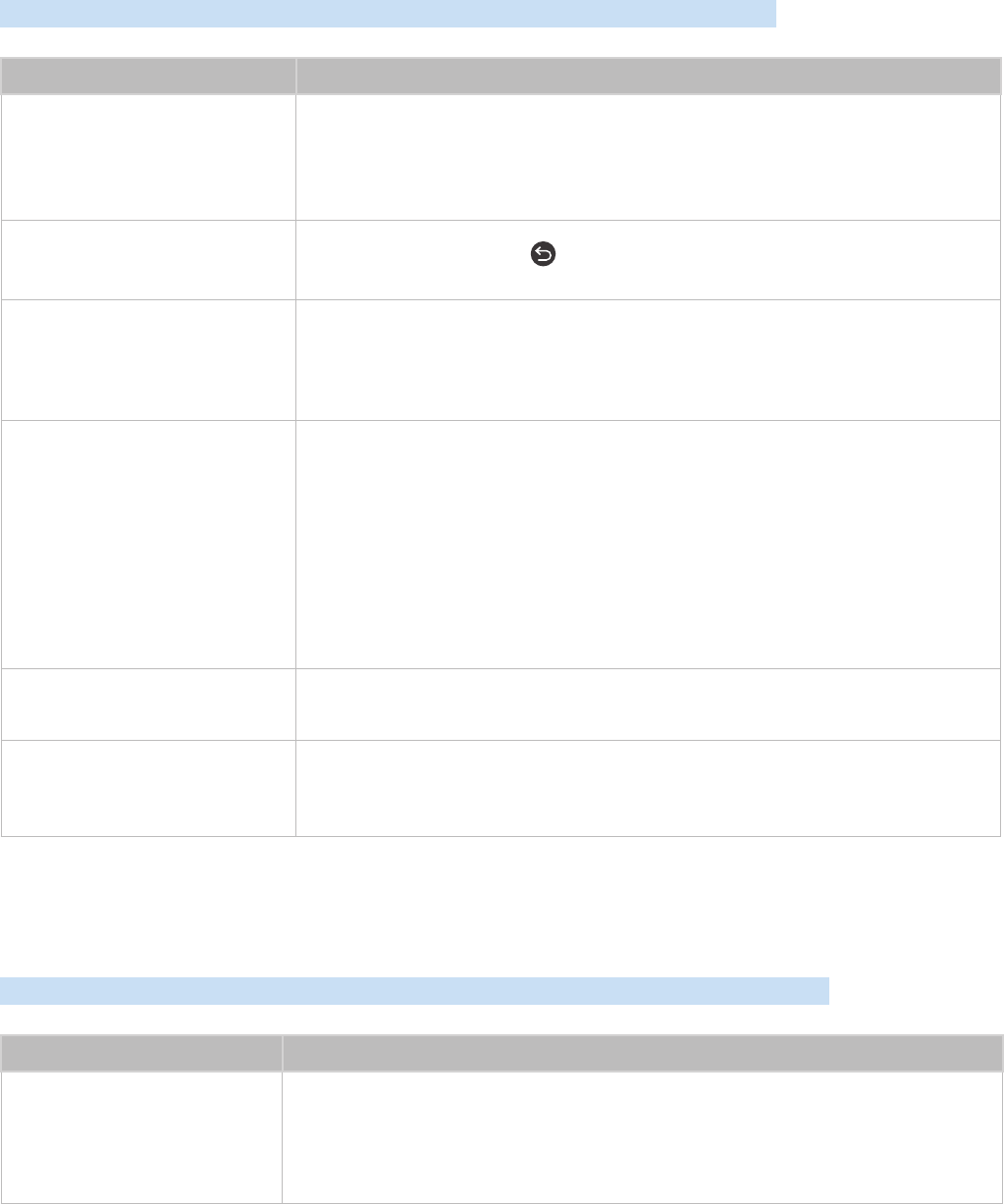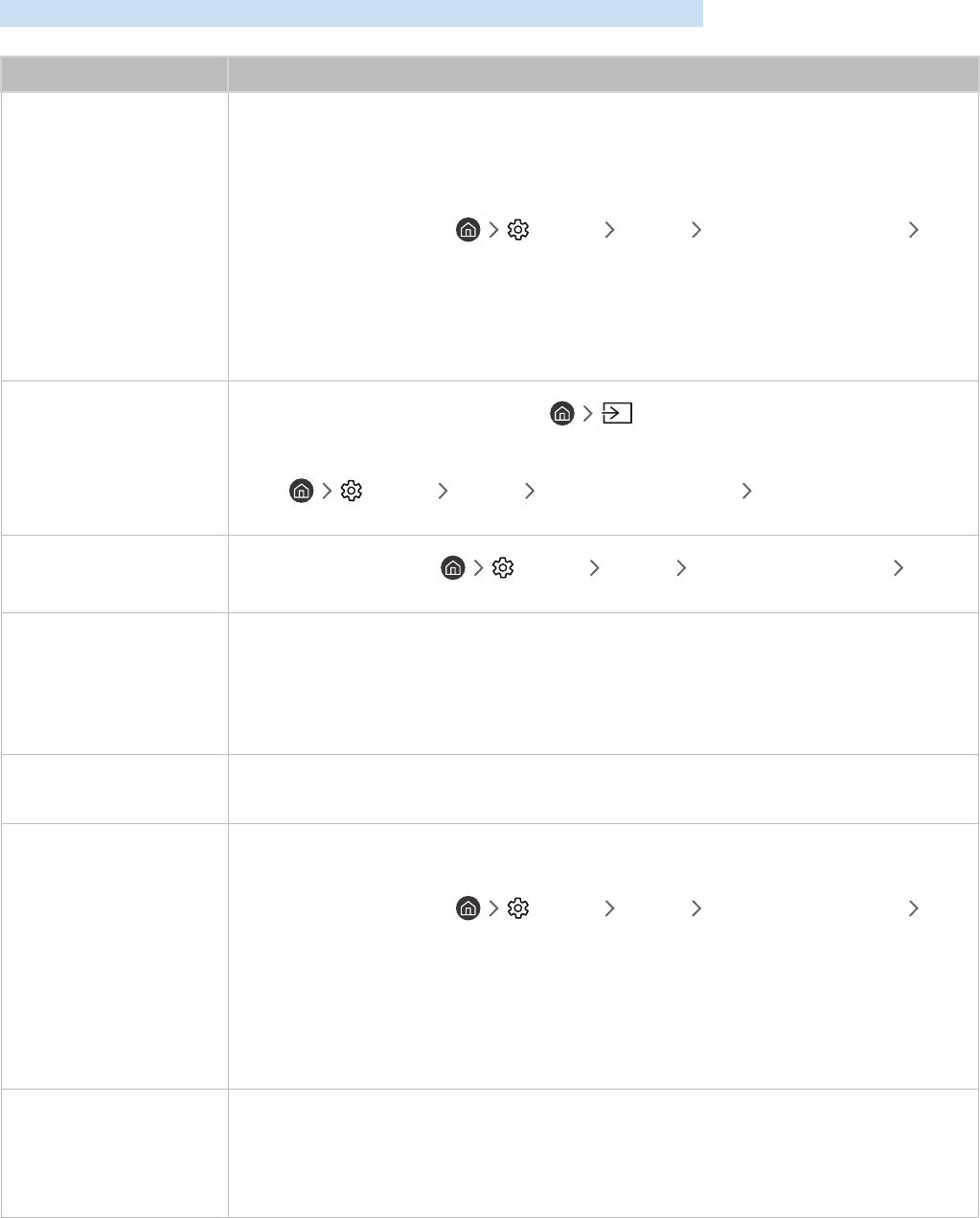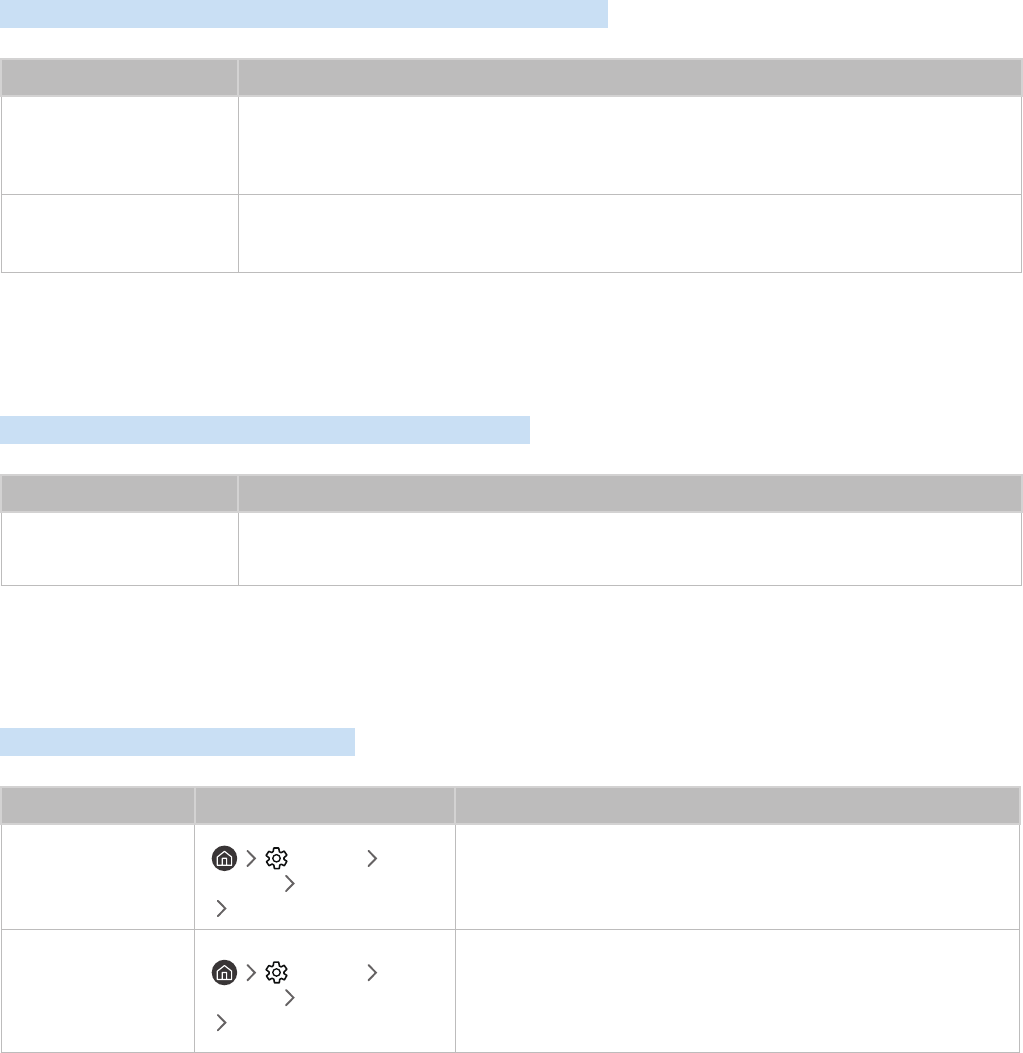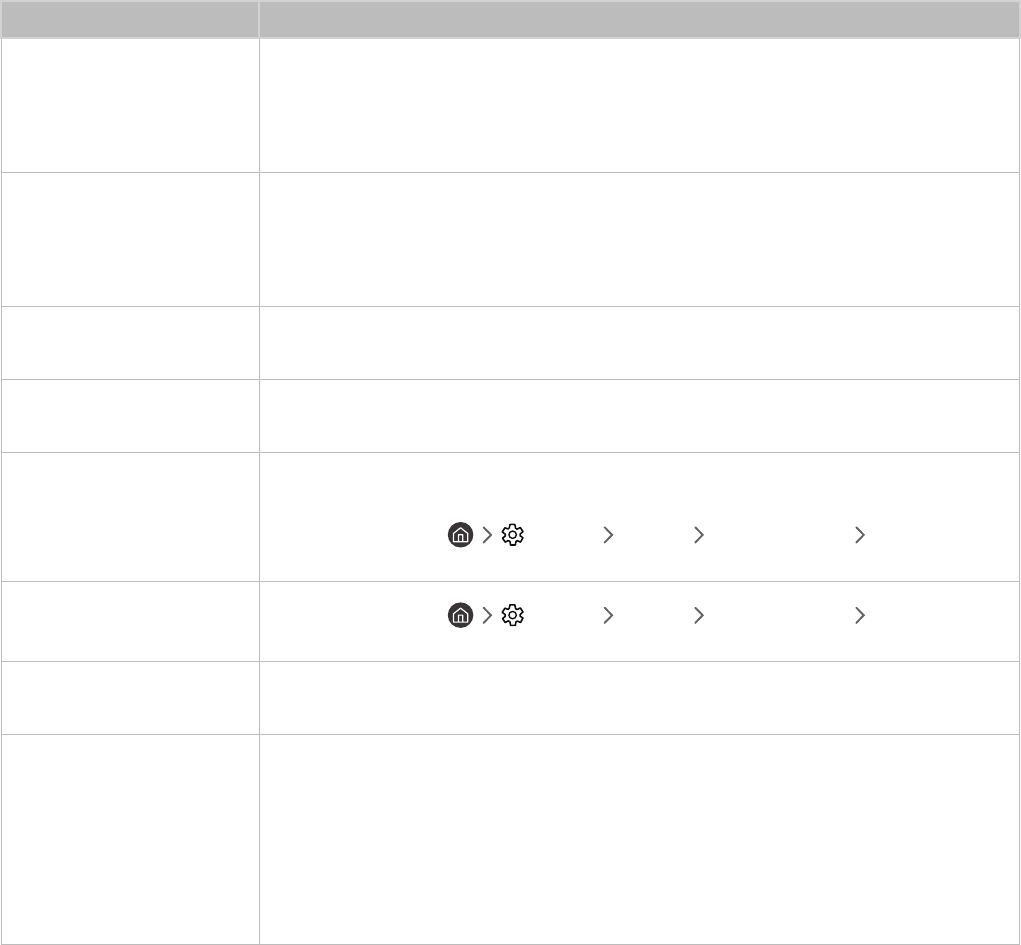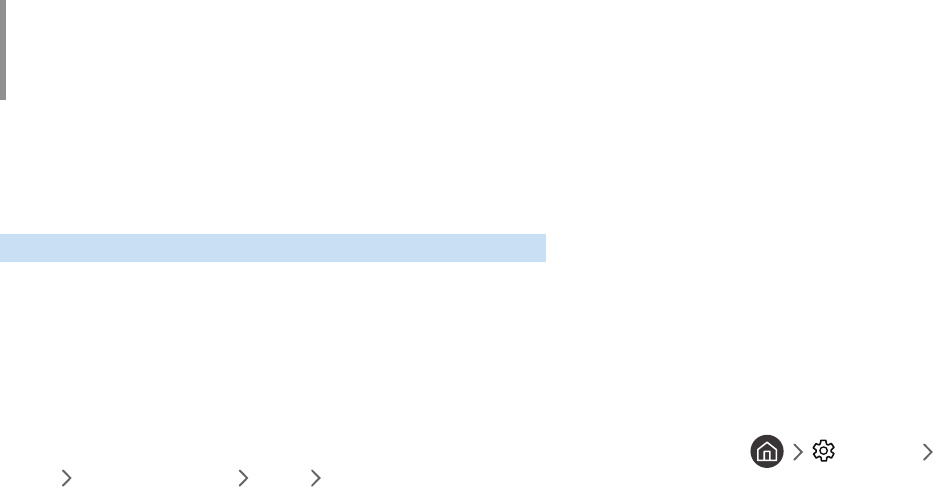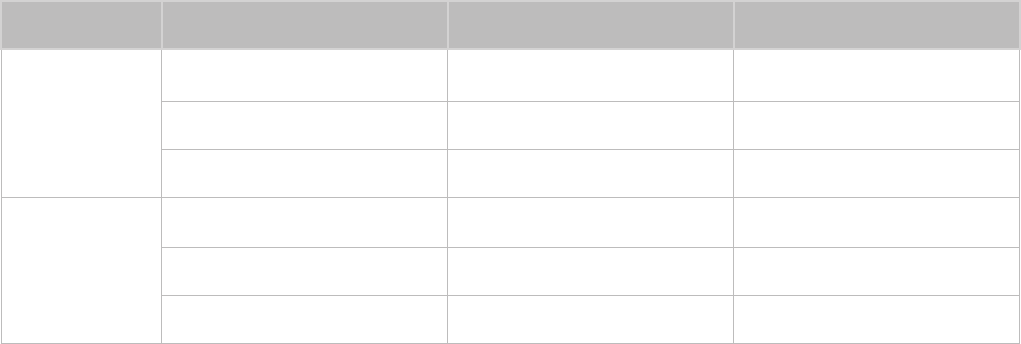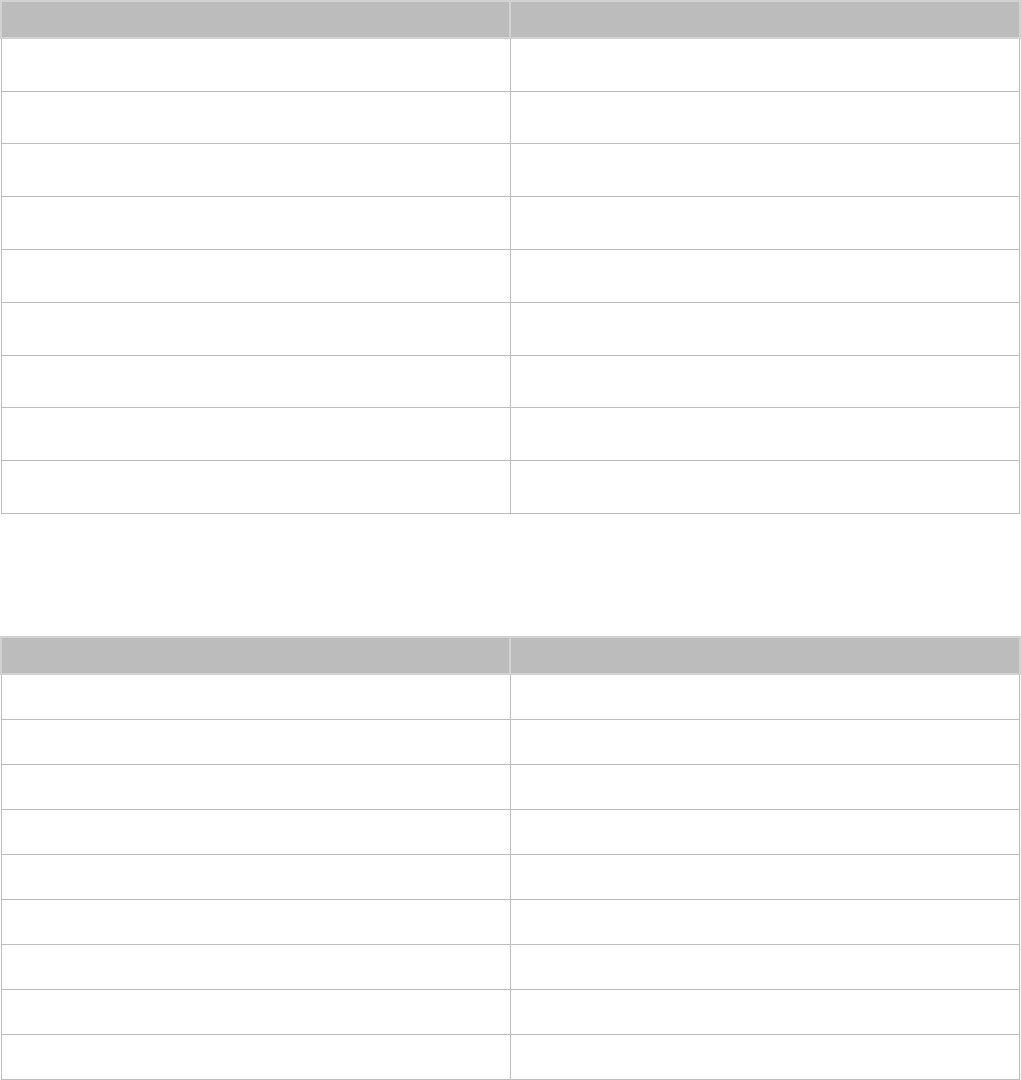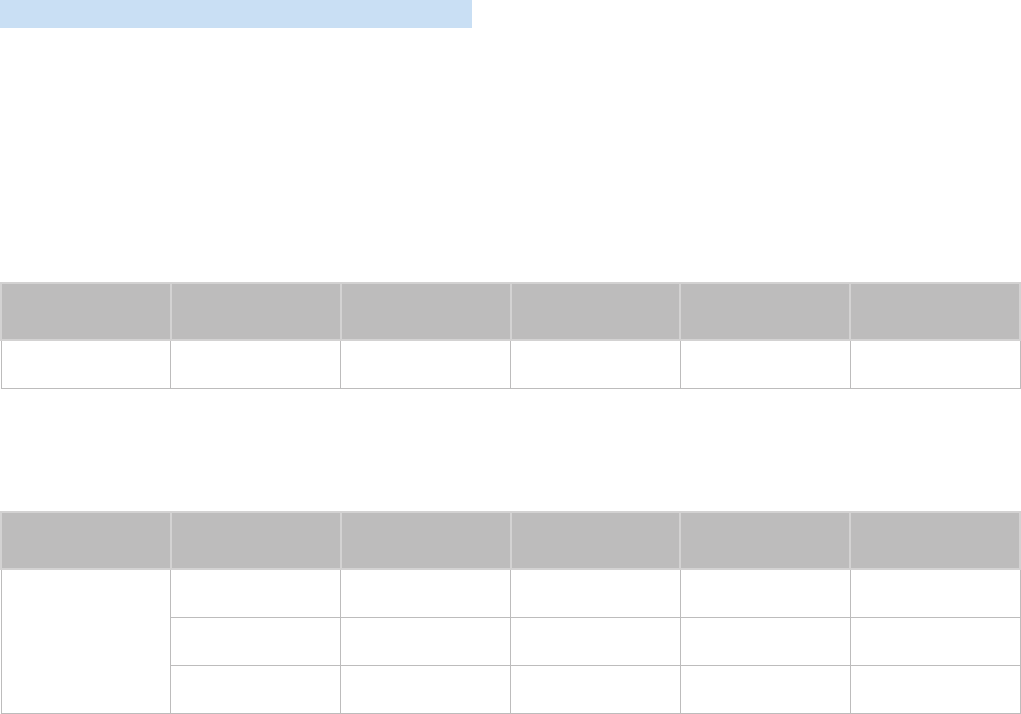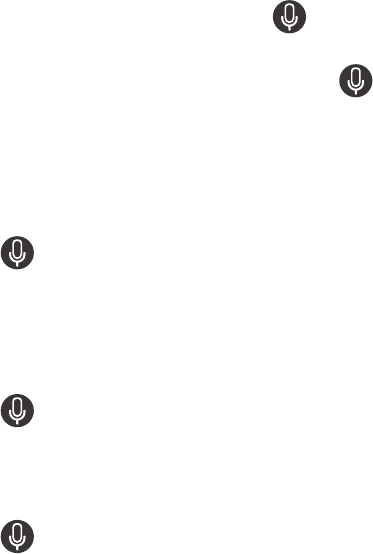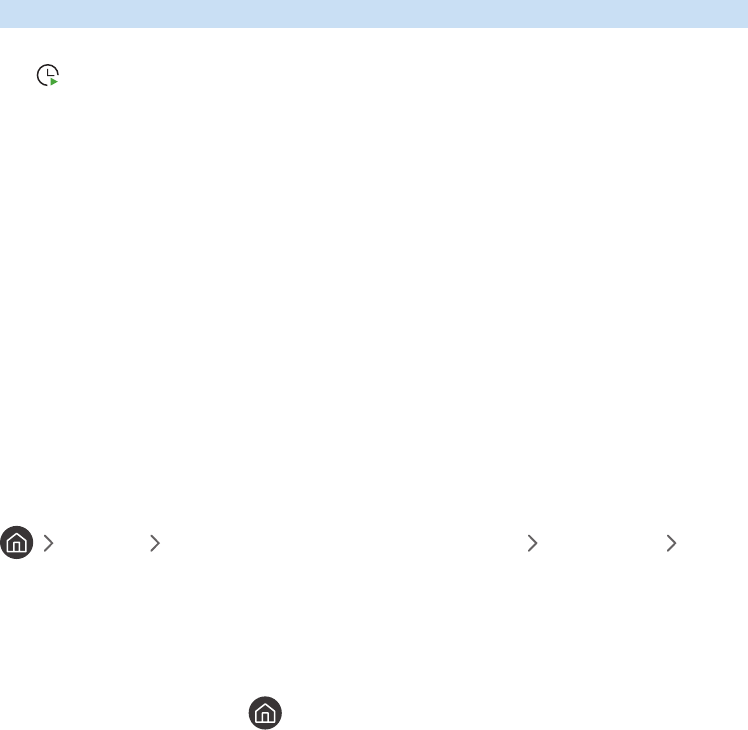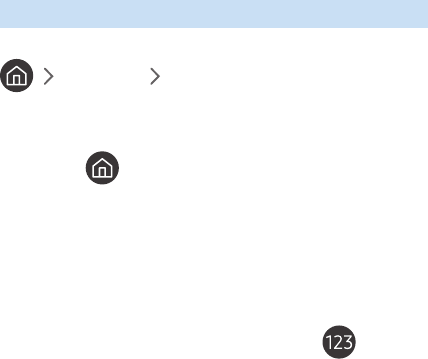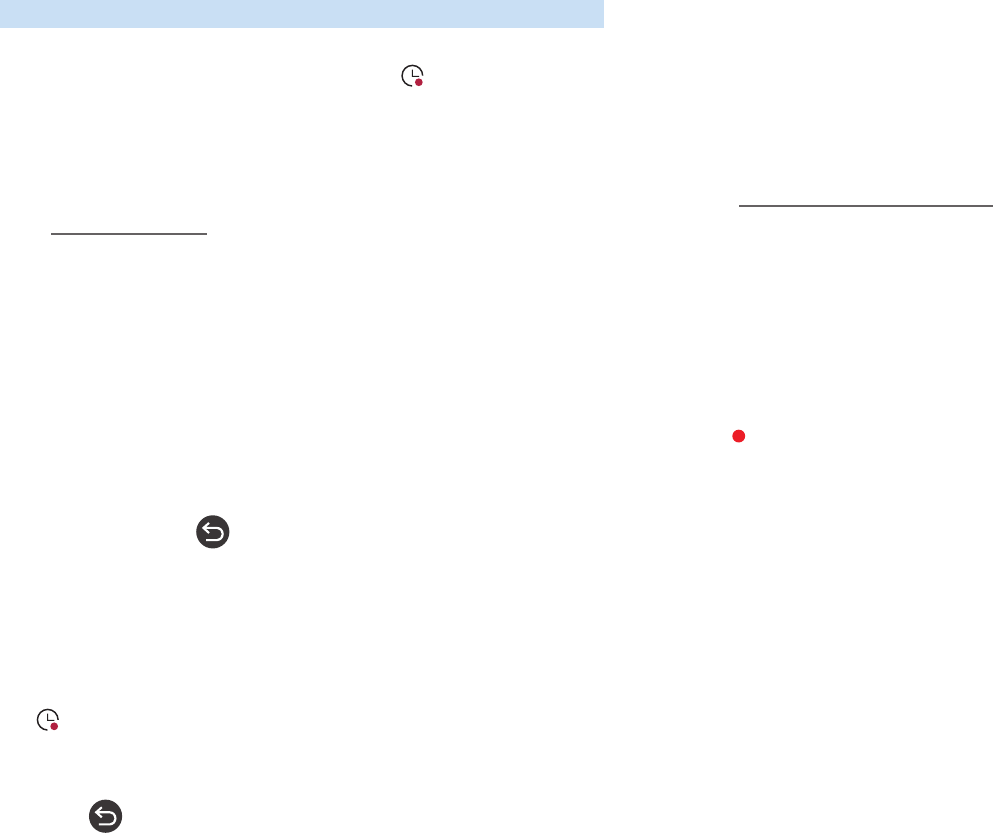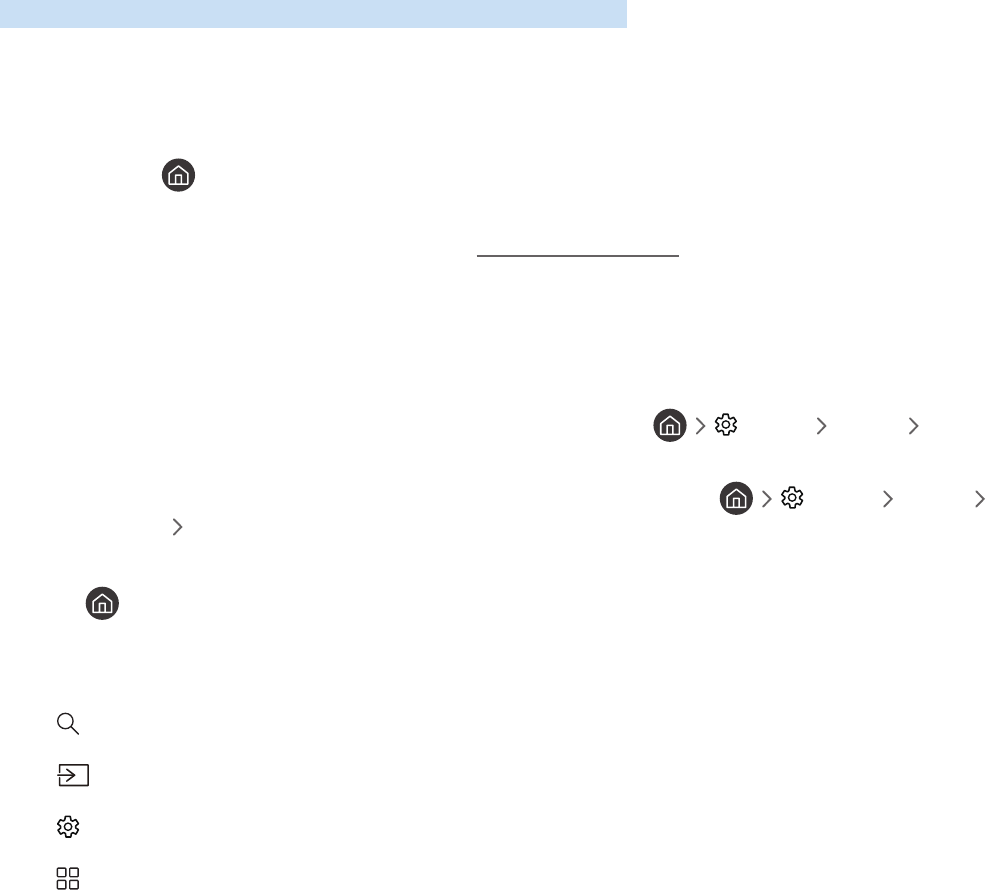TV-Viewing Support Functions
62 Changing the broadcast signal
62 Scanning for available channels
63 Restricting Viewing to Specific Channels
63 Selecting the broadcasting audio option
63 Using Programme Rating Lock
63 Configuring advanced broadcasting settings
64 Reading digital text
64 Selecting the broadcast audio language
65 Tuning broadcast signals manually
65 Fine-tuning analogue broadcasts
66 Transferring channel list
66 Deleting CAM operator profile
66 Setting satellite system
66 Changing teletext language
67 Showing common interface menu
Picture and Sound
Adjusting the Picture Quality
68 Choosing a picture mode
69 Configuring advanced picture settings
Setting the Viewing Environment for External Devices
71 Playing games on an optimised screen
71 Viewing UHD videos
71 Using HDMI black level
72 Registering the TV as a DivX-certified device (watching for pay
DivX movies)
Picture Support Functions
72 Viewing a picture-in-picture (PIP)
72 Changing the picture size
73 Changing the picture size automatically
73 Changing the picture size in 4:3 or Screen Fit mode
Adjusting the Sound Quality
74 Choosing a sound mode
74 Configuring advanced sound settings
Using the Sound Support Functions
75 Selecting speakers
75 Listening to the TV through Bluetooth devices
76 Listening to the TV through a Multiroom speaker
System and Support
Setting the Time and Using the Timer
77 Setting the current time
78 Using the timers
Using the Screen Burn Protection and Energy Saving Functions
79 Preventing screen burn
79 Reducing the energy consumption of the TV
Updating the TV’s Software
80 Updating the TV’s software to the latest version
80 Updating the TV automatically
Protecting the TV from Hacking and Malicious Code
81 Scanning the TV and connected storage for malicious code
Using Other Functions
81 Running the accessibility functions
82 Enabling voice guides for the visually impaired
82 Audio Description
83 Watching TV broadcasts with subtitles
84 White text on black background (high contrast)
84 Enlarging the font (for the visually impaired)
84 Learning about the remote control (for the visually impaired)
84 Learning about the TV menu
84 Listening to the TV through Bluetooth devices (for the hearing
impaired)
85 Configuring advanced system settings
86 Checking digital channel signal info and strength
86 Restoring the TV to the factory settings
Running Data Service Automatically
HbbTV
IV





























































































